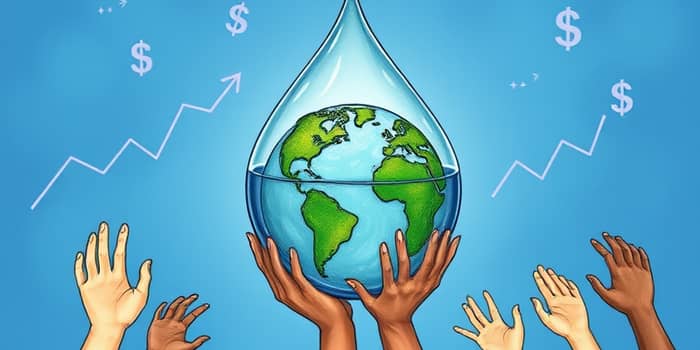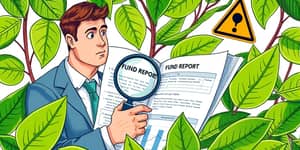
In a remote village where children trek miles for a single bucket of water, the true value of this life-giving resource becomes painfully clear. Across continents, communities face dwindling springs, polluted rivers, and parched fields. Yet amid this urgency lies a powerful investment avenue: global ETFs dedicated to clean water solutions.
By channeling capital into these funds, investors can address both a pressing human need and potentially unlock attractive long-term returns. This article guides you through why this sector matters, how ETFs work, and where to begin.
Over 2 billion people worldwide lack access to safe drinking water, and climate change intensifies droughts, floods, and contamination. Hardship befalls families forced to choose between water and other essentials. From healthcare to agriculture, water underpins every aspect of modern life.
The demand for solutions spurs innovation in water treatment, desalination, smart metering, and recycling technologies. Governments and corporations must invest heavily in upgrading infrastructure—an endeavor that creates massive market potential and aligns with global ESG priorities.
For investors, clean water initiatives represent a unique intersection of societal impact and financial opportunity.
Clean water ETFs are exchange-traded funds that aggregate shares of companies providing solutions along the water value chain. From utilities managing reservoirs to tech firms engineering advanced filtration systems, these ETFs deliver diversified exposure without the risk of selecting single stocks.
Most funds are rebalanced quarterly or annually and employ ESG screens to exclude firms with weak environmental records. This ensures the portfolio remains focused on companies driving positive water outcomes—reducing waste, preventing contamination, and expanding access.
By understanding the index methodology and expense ratios, investors can choose the ETF structure that best aligns with their financial goals and values.
Below is a table showcasing leading clean water ETFs, their recent performance, and their core focus areas. This snapshot can help you compare options side by side.
Performance can swing dramatically: some funds soared in ESG-driven rallies, then retraced amid macroeconomic shifts. Expense ratios and portfolio concentration vary, so always review the fund’s disclosures.
Several forces propel the clean water sector forward. First, global water scarcity compels cities and industries to adopt more efficient technologies. Second, regulatory mandates in Europe, North America, and Asia demand higher treatment standards.
Innovations in desalination and wastewater recycling are creating scalable solutions in drought-prone regions. Meanwhile, smart metering systems and leak detection software cut losses and improve distribution efficiency.
Bottled water consumption, which reached 46.4 gallons per person in the U.S. in 2023, underscores consumer willingness to pay for reliable, pure water—further stimulating the supply chain.
No investment is risk-free. Clean water ETFs can be sensitive to broad market swings and sector-specific setbacks. For example, a sudden regulatory change might delay a major pipeline project, impacting stock prices across holdings.
Investors should be aware of expense ratios and tracking error, which can erode returns over time. Premiums or discounts to net asset value may occur during market turbulence, affecting buy-in and exit points.
Conduct thorough due diligence on each ETF’s methodology, region exposure, and top holdings to build a well-rounded view of potential risks.
Accessing clean water ETFs is as straightforward as purchasing any other fund through your brokerage account. Simply search for tickers like AQWA, PIO, CGW, or FIW, then evaluate based on fees, performance, and thematic alignment.
Consider these steps for an informed approach:
For those who prefer a hands-off approach, thematic mutual funds or unit investment trusts offer similar exposure with professional management. Regardless of the vehicle, maintain a balanced approach within a diversified portfolio structure.
Investing in clean water initiatives via global ETFs delivers more than mere financial returns—it channels resources into solving one of humanity’s greatest challenges. As demand for reliable, safe water intensifies worldwide, the companies at the forefront of treatment, infrastructure, and technology are poised for growth.
By thoughtfully selecting and integrating water-focused ETFs, you can cultivate a portfolio that reflects both your ethical values and your financial ambitions. In doing so, your capital becomes a catalyst for change—helping communities thrive while pursuing sustainable growth for investors everywhere.
References













